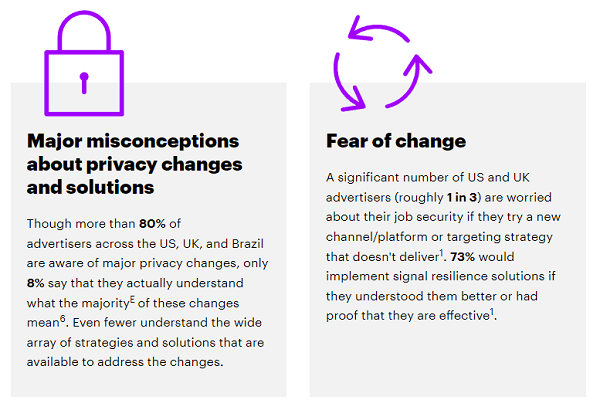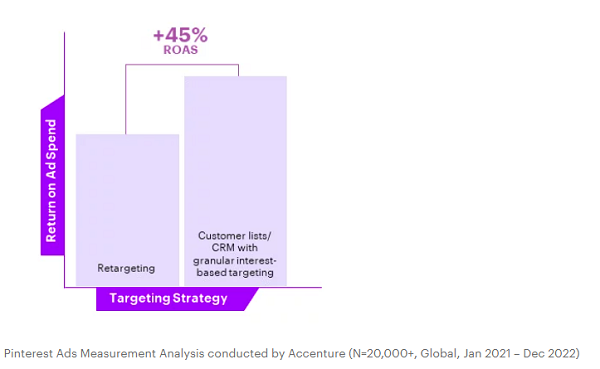As online platforms move to phase out data tracking elements, including cookies, that’s increasingly prompting significant shifts in digital marketing strategies, as businesses seek new means to maximize their ad spend, via alternative data sources.
But what data sources can you use as alternatives, and can they possibly be as effective?
This is the focus of a new survey report from Accenture, in which the Accenture team has sought to uncover the latest trends and approaches in data tracking, while also testing alternative methods, with a focus, in this instance, on Pinterest.
A key issue at present? Despite the shifting data landscape, many advertisers have not updated their strategies.
As per Accenture:
“We discovered that 45% of US and UK advertisers have been using the same approach to advertising for the last five years, and 71% of this group don’t plan on changing their strategy in the next year, leaving 32% that will continue to use outdated advertising playbooks.”
Marketers are hesitant to move on from their tried and true strategies, even as those approaches are impacted by these shifts – while the report also found that many don’t feel that they fully understand the impacts of evolving data privacy changes.

As noted here, many advertisers are simply not aware of the changes, nor the alternatives. But there are methods which do enable similar performance, with all digital platforms now building adaptive solutions to meet business need.
Which is where Pinterest comes in. According to Accenture, Pinterest’s non-third-party data options already facilitate similar performance.
“We found that, globally, advertisers on Pinterest using strategies that do not rely on third-party identifiers, like interest and keyword targeting, run no risk to their return on ad spend or conversion rates when compared with retargeting alone.”

I mean, that is somewhat subjective, in terms of using a specific platform and measuring its performance against these elements. But it’s worth noting that platforms are improving their offerings to meet advertiser demand, which could provide new means to reach wider audiences, despite having less data fuel to feed your targeting.
Based on its findings, Accenture has provided some key tips for advertisers looking to maximize their ad targeting in a post-cookie world.
- Centralize your in-house data, in order to maximize first-party insight – i.e. merging all of your available data sources will provide more information on customer journeys
- Experiment with new audience-based solutions that don’t rely on third-party tracking. Meta’s Advantage+ campaigns are an example of this.
- Ensure KPIs are aligned across teams, so that all of your departments are working towards maximizing sales, as opposed to, say, reach
- Invest in marketing mix modeling techniques to better understand consumer pathways
- Personalize and customize your outreach via generative AI and creator partnerships
- Improve tracking systems with new methods (like data clean rooms) to optimize remaining data trails
So, in summary, you need to be mapping out tracking and performance processes that are linked back to sales, as opposed to separated goals for different teams. That will then ensure that the data you do have access to is more specifically aligned with your end goals, which will help to improve all of your marketing initiatives.
There are some valuable considerations here, and it definitely is worth exploring how the loss of third-party cookies will impact your ad planning and performance, and what you can do to mitigate such.
Because right now, as these insights show, many brands have not updated their approach. Which could mean that new opportunities are emerging in your sector.
You can read the full Accenture ‘Building an intelligent foundation for navigating the attention economy’ report here, while Pinterest has also shared some additional considerations here.



